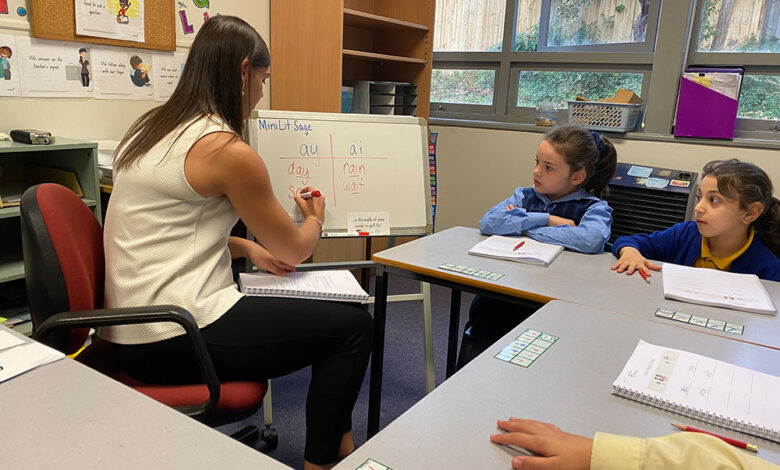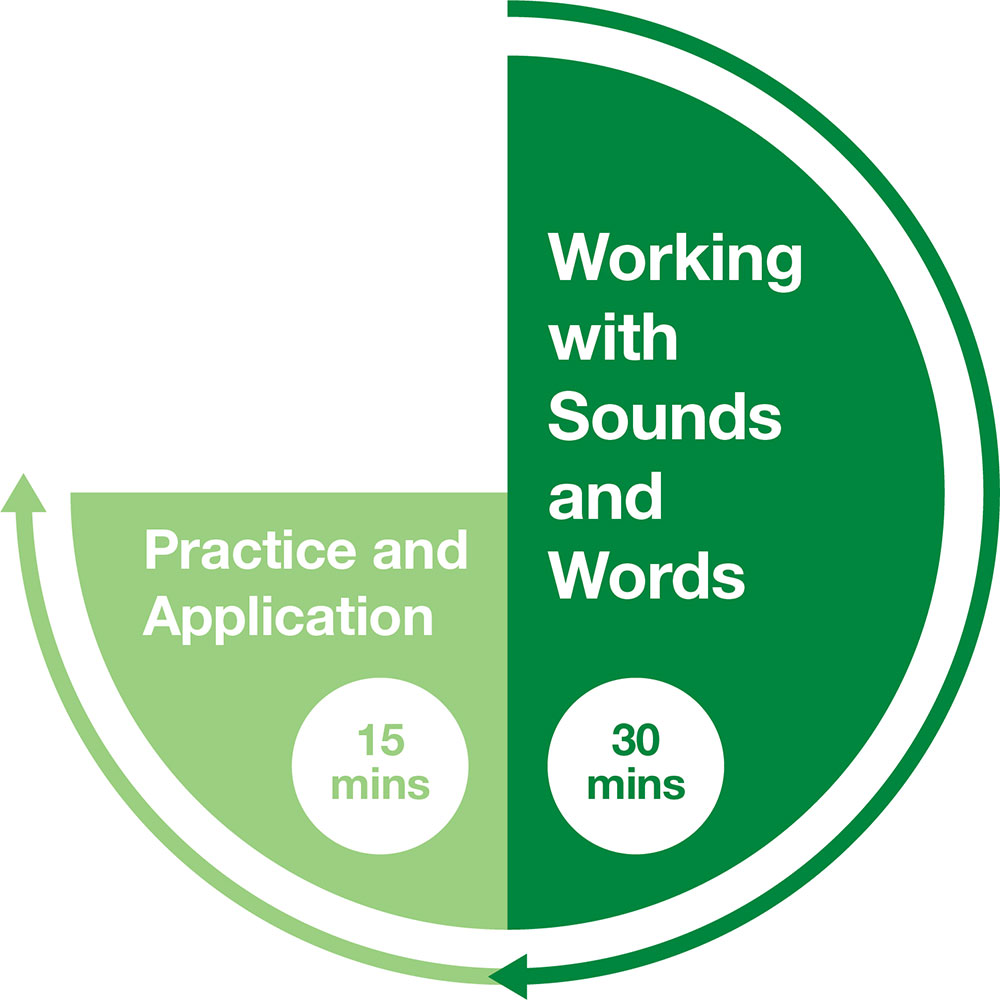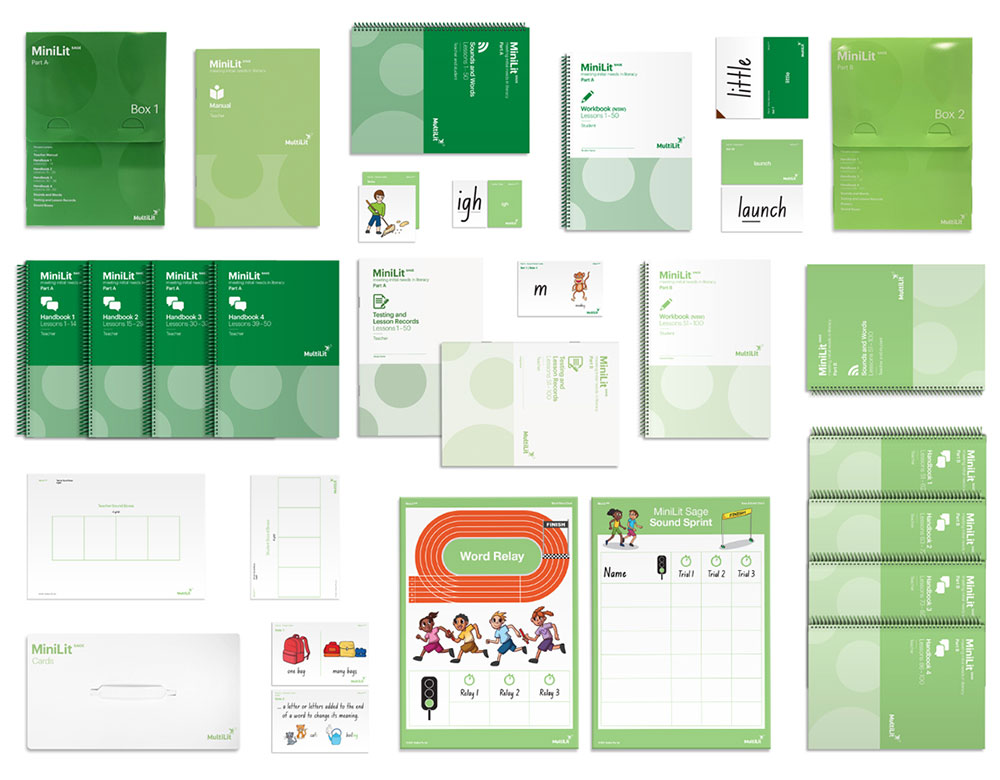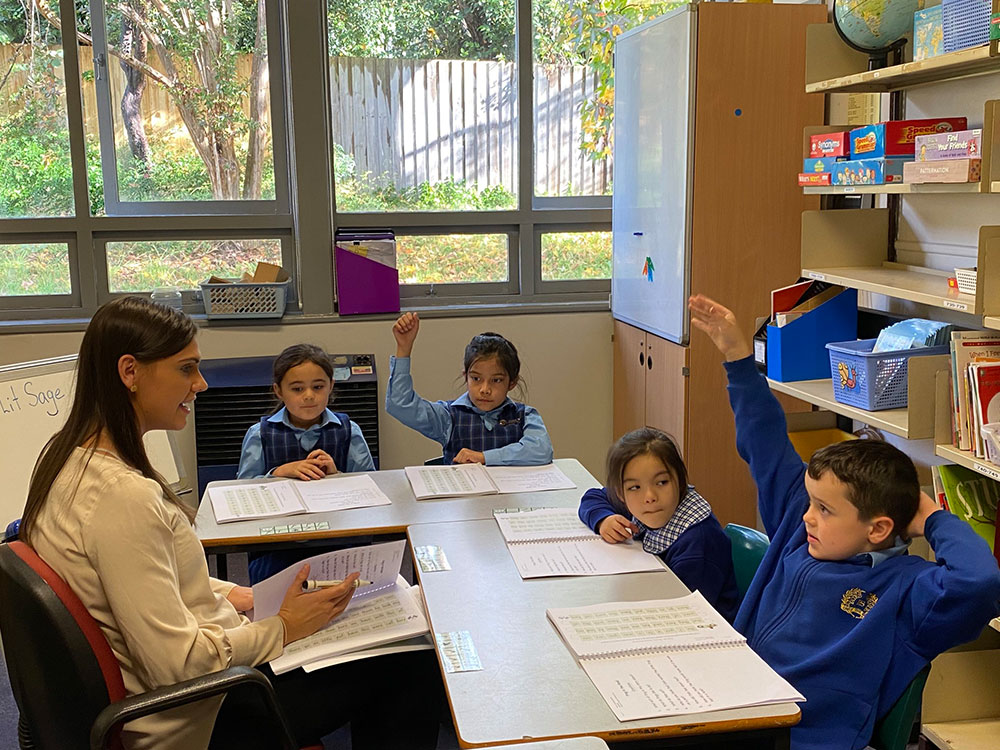How do you make a best-practice literacy intervention program even better?

In 2011, MultiLit launched MiniLit, an effective, evidence-based, small group intervention program, designed to support struggling readers in the initial stages of literacy up to Year 2.
A decade on, MiniLit Sage, the first major revision of the program has been released, informed by the latest evidence on the science of reading. The changes also bring MiniLit Sage’s scope and sequence into alignment with InitiaLit, our whole-class literacy program, providing an integrated approach to early literacy to give students who might otherwise fall behind their peers a boost. Find out how MiniLit Sage can positively impact your school by providing early intervention to reduce the number of students requiring support in higher grades.
What the lessons cover
Lessons in MiniLit Sage can be delivered to groups of up to four students who are at the same instructional level. MiniLit Sage offers 100 lessons of 45 minutes each, which should be delivered 4-5 times per week.
 Part A of the program (comprising 50 lessons) teaches the basic phonic code for reading and spelling, starting with single letter-sound correspondences, then moving onto common digraphs. Useful irregular high-frequency words to ensure early access to connected text are also taught.
Part A of the program (comprising 50 lessons) teaches the basic phonic code for reading and spelling, starting with single letter-sound correspondences, then moving onto common digraphs. Useful irregular high-frequency words to ensure early access to connected text are also taught.
Part B (50 lessons) teaches the more useful digraphs from the advanced phonic code for reading and spelling, with a focus on accuracy and fluency for text reading. Irregular high-frequency words continue to be taught.
A placement test will indicate the ideal starting point on the program for each student, with criteria provided for grouping students according to instructional level. Regular assessments administered throughout the program will monitor progress.
 Each lesson includes 30 minutes for ‘Working with Sounds and Words’ – explicit instruction in phonemic awareness and phonics – and 15 minutes for ‘Practice and Application’, incorporating reading fluency practice and connected text reading using decodable readers.
Each lesson includes 30 minutes for ‘Working with Sounds and Words’ – explicit instruction in phonemic awareness and phonics – and 15 minutes for ‘Practice and Application’, incorporating reading fluency practice and connected text reading using decodable readers.
MiniLit Sage lessons have been carefully written to ensure that the reciprocal relationship between reading and spelling is transparent. The updated Student Workbook ensures children have many opportunities to apply their knowledge of the alphabetic code to spelling in a supportive environment.
Response to intervention: aligning tier 1 and tier 2 Response to Intervention literacy programs
MiniLit Sage is aligned to the phonic scope and sequence for InitiaLit, MultiLit’s whole-class reading and spelling program for the first three years of school. MiniLit Sage now helps to ensure that all children can master both the basic and much of the extended code taught in InitiaLit–F and InitiaLit–1.

Letter-sound correspondences and irregular high frequency words, otherwise known as tricky words, taught in MiniLit Sage now align more closely with InitiaLit. As in MiniLit, MiniLit Sage introduces irregular high-frequency words more formally as soon as the children’s understanding between a letter and its sound is firm. MiniLit Sage does, however, provide more detailed tricky word instruction, focusing children’s attention on the regular and irregular parts of the word for reading and spelling.
MiniLit Sage can be successfully implemented alongside any classroom literacy program. However, it is a natural fit for those schools who are implementing InitiaLit, ensuring a seamless connection between classroom instruction and intervention.
For more information about how MultiLit’s suite of programs can assist you in helping your students on the path to reading success, visit multilit.com or email [email protected].
